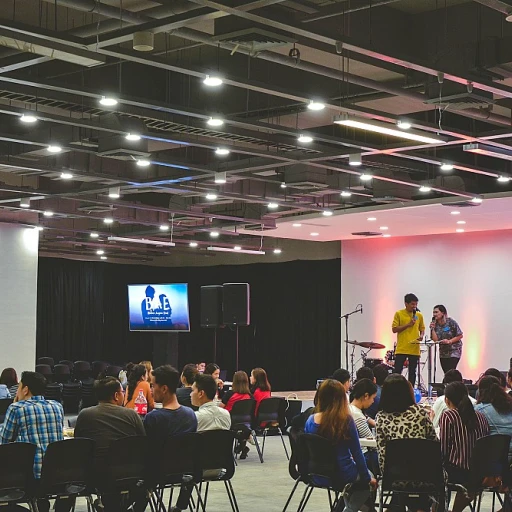
Defining Intermittent Leave of Absence
Intermittent Leave Explained
Intermittent leave of absence represents a significant yet sometimes puzzling component of leave management for both employees and employers. It allows employees to take leave in separate blocks of time or reduce their work schedule due to serious health conditions, the need to care for a family member with a serious health condition, or for other qualifying situations under the Family and Medical Leave Act (FMLA).
This type of leave is not just limited to medical needs but also extends to family obligations, such as caring for a covered family member with a serious health condition. For many employers, managing intermittent FMLA leave can be complex due to its non-continuous nature. It grants employees the flexibility to take time off work in hours, days, or weeks, depending on the condition that qualifies them for the leave.
The complexity arises due to the unpredictability and the need for managing variable leave schedules. Employers grapple with scheduling concerns, assurance of adequate staffing levels, and ensuring continuity of operations while also adhering to legal requirements.
Under the FMLA, an employee is eligible for intermittent leave when there is a certified medical need. Medical certification from a health care provider is a crucial aspect to substantiate the necessity for intermittent or reduced leave. Employers must navigate these nuances carefully to remain compliant and supportive. Moreover, as employers delve deeper into the intricacies of handling such leave, understanding best practices for implementation can be invaluable.
For those interested in learning more about the key questions to ask in the context of HR operations, you might find this article particularly insightful.
Challenges in Managing Intermittent Leave
Understanding the Intricacies of Intermittent Leave Management
Managing intermittent leave presents a unique set of challenges for employers and HR professionals. Unlike continuous leave, where an employee is absent for a prolonged period, intermittent leave involves sporadic absences due to a serious health condition or family medical needs. This type of leave can be unpredictable, making it difficult for employers to maintain a consistent work schedule and manage resources effectively.
Balancing Employee Needs and Business Operations
One of the primary challenges is balancing the needs of employees with serious health conditions against the operational requirements of the business. Employers must ensure that they comply with the Family and Medical Leave Act (FMLA) while also maintaining productivity. This can be particularly difficult when employees require frequent, unplanned absences to care for a family member or manage their own health condition.
Complexities in Scheduling and Coverage
Intermittent leave often requires adjustments to an employee's work schedule, which can disrupt team dynamics and project timelines. Employers need to find ways to cover the hours lost due to intermittent leave, often relying on temporary staff or redistributing tasks among existing employees. This can lead to increased workloads and stress for other team members.
Documentation and Compliance
Another significant challenge is ensuring compliance with FMLA regulations. Employers must keep accurate records of leave taken and ensure that employees provide the necessary medical certification to justify their absences. This process can be time-consuming and requires careful attention to detail to avoid potential legal issues.
Effective Communication and Support
Open communication between employers and employees is crucial in managing intermittent leave effectively. Employers should provide clear guidelines on how to request leave and what documentation is required. Additionally, offering support to employees, such as flexible work arrangements or access to health care resources, can help alleviate some of the stress associated with managing a serious health condition.
For more insights on managing HR challenges, consider exploring crafting an effective warning letter for unprofessional behavior.
Role of Human Resources Information Systems
Leveraging Technology for Effective Leave Management
Human resources information systems (HRIS) have become an essential tool in managing the complexities of intermittent leave. Employers face significant challenges when it comes to accurately tracking intermittent leave schedules, understanding employees' health care needs, and ensuring compliance with legal requirements like the Family and Medical Leave Act (FMLA). This is where a robust HRIS can provide valuable support. HRIS platforms are designed to manage employee information comprehensively, which includes leave transactions. These systems enable tracking of the leave schedule, and monitor the number of hours taken, ensuring that the intermittent FMLA policies are correctly applied. They allow employers to maintain accurate records of the serious health conditions faced by employees or their family members, as well as the required medical certifications. This automation reduces administrative workload, provides clarity, and helps in managing compliance more effectively. As health conditions and medical leave requirements vary significantly among employees, the flexibility of HR systems plays a crucial role in addressing individual needs. Employers can leverage their HR systems to configure specific leave plans that accommodate reduced leave or partial leave hours. These systems can be particularly beneficial in catering to employees' serious health needs without disrupting work processes excessively. For companies looking to enhance their intermittent leave management, the implementation of a robust HRIS can be a game changer. To understand more about how an employment short form could streamline such processes, you might want to explore further insights into the role of employment short forms in HRIS. By integrating advanced technological solutions, employers can ensure better support for their workforce, leading to improved compliance, increased employee satisfaction, and overall workplace harmony.Best Practices for Implementation
Implementing Efficient Leave Policies
Managing intermittent leave within a company involves more than simply adhering to the legal requirements of FMLA. To implement best practices, it's essential for employers to develop an efficient system that makes the process seamless and transparent for all parties involved. Here are some strategies that can contribute to successful implementation:- Establish Comprehensive Policies: Clearly defined leave policies can greatly reduce confusion. Employers should detail eligibility requirements, documentation needed, such as medical certification, and procedures for notifying the company about leave schedules. This clarity helps employees understand their rights and obligations under FMLA leave, aiding in compliance and minimizing disputes.
- Integrate HRIS Solutions: Human Resources Information Systems (HRIS) can be leveraged to track and manage all aspects of intermittent FMLA leave. By using an automated system, both employers and employees can efficiently manage schedules, keeping track of hours worked and leave taken. This is vital for keeping operations smooth and ensuring compliance with FMLA requirements.
- Train Management and Employees: Conducting regular training sessions related to FMLA and intermittent leave can prepare both management and employees. This education can help in understanding serious health conditions and the implications of taking reduced leave or managing the responsibilities of care for a covered family member. Training ensures that everyone is on the same page regarding the rights and responsibilities concerning medical leaves of absence.
- Communicate Openly: Prompt and courteous communication about intermittent leave policies can foster better relationships between employers and employees. Employers should encourage employees to discuss their health conditions and scheduling needs openly, ensuring they receive the necessary support while meeting their work responsibilities.
- Monitor and Evaluate Implementation: Regularly reviewing how leave policies are implemented within the organization ensures that they remain effective and fair. Employers should seek employee feedback on the process to identify areas for improvement, ensuring timely updates to policies as needed.
Case Studies and Real-World Examples
Real-World Applications of Intermittent Leave Management
Managing intermittent leave, especially under the FMLA, presents various complexities for employers and employees alike. Real-world examples can provide valuable insights into handling these challenges effectively. Consider an employer who manages a large number of employees with serious health conditions. The use of a streamlined leave management system can make all the difference. Such a system can effectively reorganize work schedules, ensuring that no critical responsibilities are left unattended while providing the employee the necessary time off. In another instance, an employee might need to take intermittent FMLA leave due to a family member's health condition. With a robust HR information system, the employer can easily coordinate the employee's reduced leave schedule with other team members’ schedules. This ensures smooth workflow continuity during the employee's absence. For organizations emphasizing employee well-being, offering paid leave options can be crucial. Employers can enhance employee satisfaction and reduce turnover rates by recognizing intermittent medical leave needs and accommodating them within the framework of family and medical leave policies established by health care professionals. Also, incorporating medical certification and compliance tracking into HR systems can help verify and document the legitimate use of FMLA leave. This safeguard ensures that both employees and employers adhere to legal requirements, maintaining a balanced and fair working environment. These examples demonstrate that with a well-implemented HR system, managing intermittent FMLA leave becomes less burdensome. Ultimately, fostering a supportive culture around such leave not only benefits employees dealing with serious health concerns but also reinforces trust and loyalty across the organization.Future Trends in Leave Management
Emerging Trends in Leave Management
As the workplace landscape continues to evolve, so too does the approach to handling leave, including intermittent FMLA. Organizations and employers are increasingly shifting towards a more flexible and employee-centered leave management system. Several trends are shaping the future of leave management:- Digital Transformation and Automation: With advances in technology, human resources information systems are adopting automated leave tracking and reporting features. This not only helps employers keep accurate records of intermittent leave hours but also streamlines the process for employees, reducing administrative burdens.
- Increased Focus on Employee Health and Well-being: There is a growing recognition of the importance of mental health and overall well-being. Employers are expanding their leave policies to cover serious health conditions and mental health care, ensuring employees can take necessary leave to care for themselves or a family member without stress.
- Personalized Leave Solutions: More companies are adopting flexible leave schedules and offering personalized leave solutions tailored to individual employees’ needs. This includes adapting work schedules to accommodate reduced leave schedules or providing additional support for those with serious health conditions that require intermittent medical leave.
- Enhanced Compliance and Legal Oversight: As regulations like the Family Medical Leave Act (FMLA) evolve, compliance remains a top priority. HR systems are incorporating compliance checks to ensure employers are fulfilling their legal obligations, minimizing legal risks associated with leave management.
- Integration with Health Care Systems: Collaborations between HR systems and health care providers are intensifying, allowing seamless transmission of necessary medical certifications and documentation required for FMLA leave, including continuous FMLA and intermittent leave. This integration helps in reducing errors and ensuring timely medical certifications are processed.












